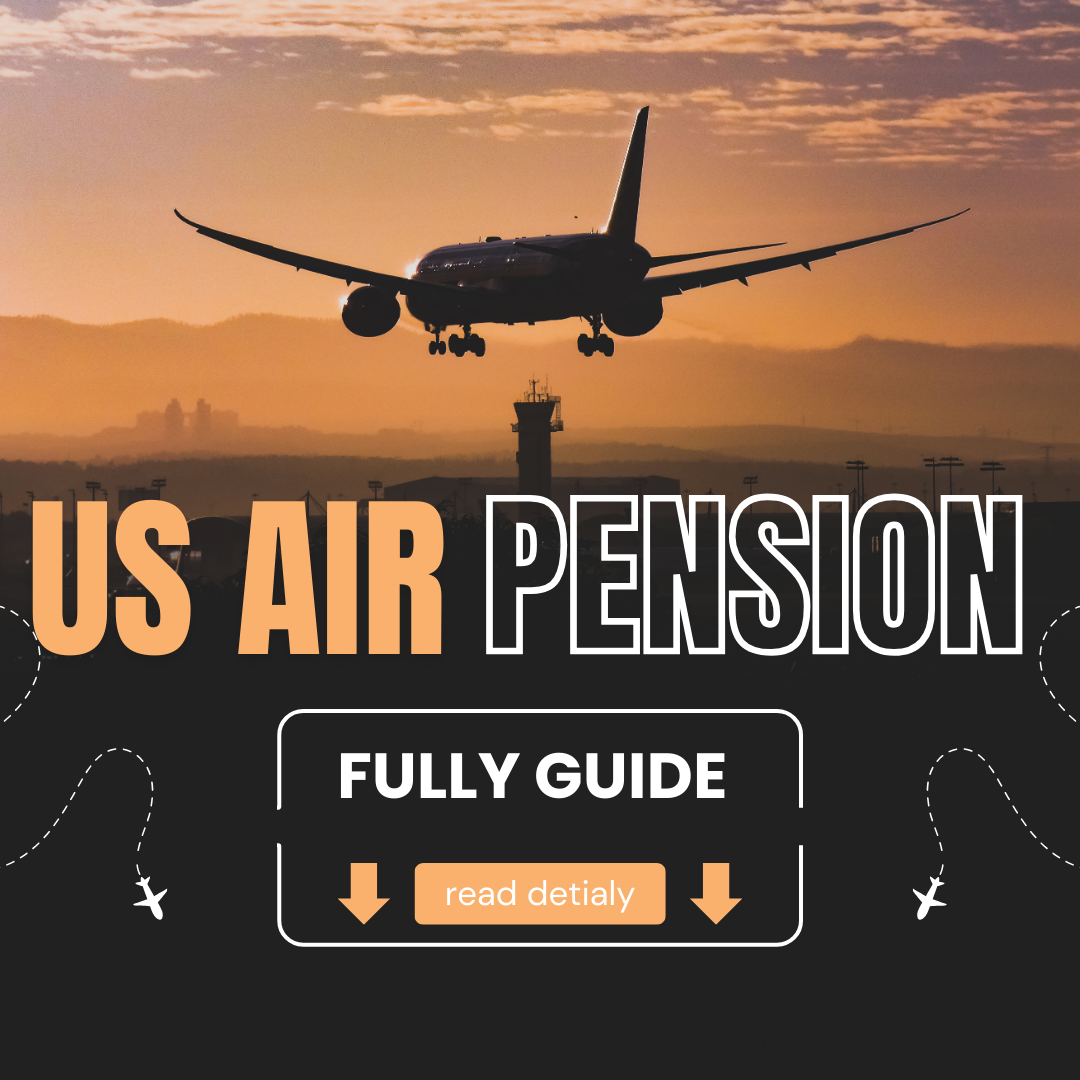When planning for retirement, understanding how your pension benefits will hold up against inflation is critical. For those who are part of the U.S. airline industry, this question is especially relevant. Will your U.S. air pension retain its value over time, or will inflation gradually erode your purchasing power? Let’s break it down.

What Is Inflation, and Why Does It Matter for Pensions?
Inflation measures the rate at which the cost of goods and services rises over time. For retirees, this can be a silent financial threat. A pension that seems generous today may lose its purchasing power if it does not adjust for inflation. For example:
- If inflation is 3% annually, the purchasing power of a fixed $50,000 pension will drop to roughly $37,200 in 10 years.
Inflation directly impacts retirees’ lifestyles by increasing the costs of essentials like healthcare, housing, and groceries. The U.S. airline industry’s pension plans vary in how they address this issue, so let’s dive into the specifics.
Do U.S. Airline Pensions Adjust for Inflation?
Most traditional defined-benefit pensions in the airline industry do not automatically adjust for inflation. Here’s an overview:
- Fixed Benefits: Many airline pensions provide a fixed monthly benefit based on years of service and salary history. However, these amounts generally do not increase to match inflation.
- Cost of Living Adjustments (COLAs): Some pensions, especially those managed under union agreements or government programs, may include periodic COLAs. However, these are less common in private airline pensions.
- Defined Contribution Plans: Modern retirement plans like 401(k)s, now more common in the airline industry, don’t inherently account for inflation. Instead, retirees rely on investment growth to outpace inflation.
Historical Context: Airline Pension Challenges
The airline industry has faced significant financial turbulence over the decades. High-profile bankruptcies of major airlines like United Airlines and Delta in the early 2000s forced the Pension Benefit Guaranty Corporation (PBGC) to take over some underfunded pensions. When the PBGC steps in, benefits are capped, and inflation adjustments are not guaranteed.
For instance:
- PBGC Caps for 2024: The maximum monthly benefit for a 65-year-old retiree under the PBGC is $6,750. This amount remains static regardless of inflation.
The Role of Social Security in Combating Inflation
While airline pensions may lack inflation protection, Social Security benefits include annual Cost of Living Adjustments (COLAs) designed to keep pace with inflation. Over the last decade, these adjustments have varied widely—from 0% in 2016 to 8.7% in 2023—based on changes in the Consumer Price Index (CPI).
For retirees relying on both a pension and Social Security, these annual increases can partially offset the eroding effects of inflation. For example:
- In 2023, a retiree receiving $2,000 per month from Social Security saw an annual increase of $2,088 due to the COLA.
While not a complete solution, this adjustment highlights the importance of integrating Social Security into overall retirement planning.
Strategies to Combat Inflation in Retirement
If your airline pension doesn’t adjust for inflation, here are some proactive strategies:
- Invest Wisely: Use retirement accounts like IRAs or 401(k)s to invest in assets that historically outpace inflation, such as stocks, real estate, and inflation-protected securities like Treasury Inflation-Protected Securities (TIPS).
- Delay Social Security: Social Security benefits include annual COLAs. Delaying your claim can increase your monthly benefit, providing a more substantial inflation-adjusted income.
- Annuities with COLAs: Consider purchasing an annuity with built-in inflation protection to supplement your pension income. While these annuities may come with higher upfront costs, they offer steady, inflation-adjusted payments over time.
- Diversify Income Sources: Having multiple income streams—from part-time work, dividends, or rental properties—can help you manage rising costs and create a financial cushion.
- Maintain a Health Savings Account (HSA): Healthcare costs often outpace general inflation rates. Contributing to an HSA during your working years can provide tax-advantaged funds to cover medical expenses in retirement.
Real-Life Example
John, a retired pilot, receives $60,000 annually from his airline’s pension plan. Over 10 years, inflation reduces his purchasing power by approximately 30%, making it harder to maintain his lifestyle. However, his Social Security benefits—adjusted annually for inflation—help mitigate the gap. John also invested in dividend-paying stocks, which provided additional income to keep up with rising expenses.
In contrast, Susan, another retiree, chose to allocate part of her retirement savings to a COLA-adjusted annuity. This decision ensured that her supplemental income grew alongside inflation, maintaining her purchasing power.
Long-Term Planning: Considerations for Future Retirees
If you’re still in the workforce and planning for retirement, here are some additional considerations:
- Maximize Contributions: Contribute the maximum allowable amount to your retirement accounts, taking advantage of any employer matches.
- Understand Your Pension Plan: Review the details of your airline’s pension plan to understand whether it includes COLAs or other inflation protection measures.
- Plan for Healthcare Costs: Healthcare expenses can consume a significant portion of retirement income. Consider supplemental insurance or long-term care insurance to manage these costs.
- Reevaluate Your Investment Portfolio: As you approach retirement, shift your portfolio to include a mix of growth-oriented and inflation-protected assets.
- Stay Informed: Keep up-to-date with changes in inflation rates and retirement policies that may impact your financial plans.
The Future of Airline Pensions
Given the financial challenges faced by the airline industry, the structure of pensions is likely to evolve. New hires may see a continued shift toward defined contribution plans, which place more responsibility on employees to manage their retirement savings. While this approach offers flexibility, it also underscores the need for financial literacy and proactive planning.
For existing pension holders, advocacy through unions and employee groups can play a role in negotiating better retirement benefits, including potential COLA provisions.
Key Takeaways
- Most U.S. airline pensions do not adjust for inflation.
- Inflation can significantly erode the value of a fixed pension over time.
- Retirees should plan proactively by diversifying income sources and leveraging inflation-protected financial tools.
- Social Security and personal investments can help bridge the gap left by non-inflation-adjusted pensions.
Final Thoughts
While U.S. airline pensions provide a stable income, they often lack inflation protection, posing a challenge for long-term financial security. By understanding the limitations and planning accordingly, retirees can safeguard their financial future. Whether you’re a current airline employee or a retiree, taking action today will ensure your golden years remain comfortable.
Retirement planning is a dynamic process that requires regular reassessment. By staying informed and adaptable, you can build a retirement strategy that withstands the test of time—and inflation.
Explore more about securing your retirement income by checking out our guide on Smart Investment Strategies for Retirees.
